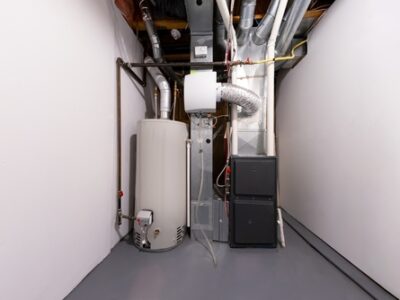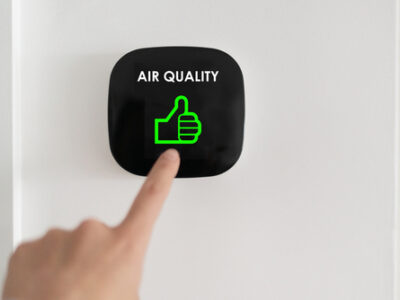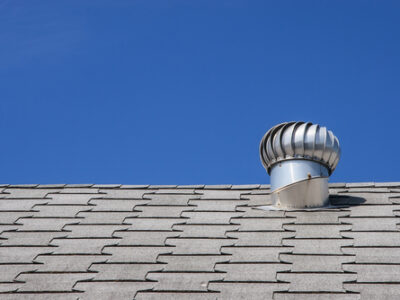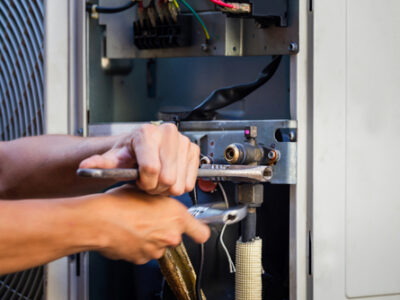 5 Tips to Prepare Your Furnace for Summertime
5 Tips to Prepare Your Furnace for Summertime
As the warm weather approaches, it’s time to start thinking about shutting down your furnace and preparing it for the summer. Proper maintenance will not only prolong the lifespan of your furnace, but it will also help save you money on energy bills. Below are 5 tips that you can follow to prepare your HVAC services for summertime.
1. Change the furnace filter
Changing the furnace filter is one of the easiest and most important things to do when preparing your furnace for the summer. A dirty or clogged filter can cause your furnace to work harder than it needs to, which can result in increased energy consumption. It can also lead to a decrease in indoor air quality and may exacerbate allergies. In general, it’s recommended to change the filter at least once every three months. However, if you live in a dusty area or have pets, you should change the filter more frequently.
2. Clean the ductwork
Over time, the ductwork in your home can accumulate dust, mold, and other debris. This can clog the ducts and prevent proper airflow through your home. To avoid this, it’s recommended to have your ductwork professionally cleaned at least once every three to five years. This can help improve indoor air quality and prevent the buildup of harmful allergens.
3. Turn off the furnace
Once the weather starts to warm up, you can turn off your furnace for the season. Before doing this, however, it’s important to make sure that the furnace is completely turned off and that the pilot light is extinguished. You should also turn off the gas and electricity supply to the furnace. This will help you avoid any potential safety hazards and prevent unnecessary energy usage.
4. Schedule a professional inspection
Having a professional inspect your furnace is an important step in preparing it for the summer. A trained technician can perform a thorough inspection of your furnace and identify any potential issues that need to be addressed. They can also identify any worn or damaged parts that may need to be replaced. This can help avoid costly heating repairs down the line and ensure that your furnace is running efficiently.
5. Cover the furnace
Once your furnace has been turned off and inspected, you can cover it to protect it from dust, moisture, and other debris. This will help prevent rust from forming on the furnace and help prolong its lifespan. If you live in an area with high humidity, it’s recommended to invest in a dehumidifier to help prevent moisture buildup.
Final Thoughts
Preparing your furnace for the summer doesn’t have to be a difficult task. By following these simple tips, you can ensure that your furnace is running efficiently and save money on energy bills. If you’re unsure about what steps to take or would like to have a professional inspect your furnace, give us a call! Our team of trained technicians can help ensure that your furnace is ready for the summer season. Contact us today to schedule your furnace maintenance appointment!
 Hazards of Poor Air Quality in the Home
Hazards of Poor Air Quality in the Home
Air is one of the essential elements of life. We breathe in almost 20,000 liters of air every day. Air quality refers to the quality of the air we breathe. Poor air quality can have serious health effects on both humans and animals. It is essential to know the hazards of poor air quality from your home’s heating and cooling services and take steps to improve it.
What is Poor Air Quality?
Poor air quality refers to the presence of hazardous particles or gases present in the air we breathe that can affect our health. Air pollutants can be of any kind, such as gases, chemicals, or microorganisms, that can cause air pollution. It is mainly caused by emissions from vehicles, industrial processes, and burning fossil fuels.
Hazards of Poor Air Quality in the Home:
1. Respiratory Problems:
Poor air quality in the home can lead to respiratory problems such as asthma, allergies, and breathing difficulties. The most common cause of respiratory problems is dust mites and pet dander. These tiny airborne particles can cause allergies and affect the lungs, leading to the development of asthma.
2. Lung Cancer:
Long-term exposure to poor air quality can cause lung cancer. Indoor air pollution contains several carcinogens that increase the risk of developing lung cancer. Radon, for example, is a gas that seeps into homes from the ground and is the leading cause of lung cancer in non-smokers.
3. Cardiovascular Disease:
Poor air quality can cause cardiovascular disease. Air pollution causes inflammation in the body, leading to heart disease, heart attacks, and stroke. Inhaling polluted air triggers the release of stress hormones in the body, which can cause blood pressure to rise and lead to a heart attack.
4. Carbon Monoxide Poisoning:
Carbon monoxide is a colorless, odorless gas produced by the burning of fuel, including gas, oil, wood, and coal. It can cause headaches, dizziness, and nausea, and in severe cases, it can be fatal. It’s important to have a carbon monoxide detector in your home to detect any problems.
5. Sick Building Syndrome:
Sick building syndrome refers to a range of symptoms that people develop when they spend extended periods in a particular building. The symptoms may include headaches, fatigue, eye irritation, and respiratory problems. The cause of sick building syndrome is poor air quality, and it can be caused by inadequate ventilation, volatile organic compounds, or chemical pollutants.
6. Skin Irritation:
Poor air quality may also cause skin irritation. Many people experience skin irritation due to indoor air pollutants. Exposure to low levels of pollutants, which are usually not harmful, can lead to skin problems. Pollutants such as volatile organic compounds can irritate the skin, causing rashes and other skin problems.
7. Cognitive Effects:
Poor air quality can lead to cognitive problems, including memory loss and difficulty concentrating. These effects are especially harmful to children, who have developing brains that are more susceptible to environmental toxins.
How to Improve Indoor Air Quality:
1. Use Air Purifiers:
Air purifiers from an energy-efficient HVAC installation are an excellent way to improve indoor air quality. They work by filtering out pollutants and allergens and releasing clean air into the room. There are several types of air purifiers available, including HEPA filters, activated carbon filters, and UV-C germicidal lamps.
2. Ventilation:
Proper ventilation is essential to maintain good air quality. Air needs to circulate to prevent pollutants from accumulating. Open windows and doors or consider using an exhaust fan. Ensure your HVAC system has an air filter to trap pollutants.
3. Reduce Chemical Exposure:
Limit the use of chemical detergents, fragrances, and other household cleaners. These chemicals can release toxic fumes into the air and affect the air quality. Instead, you can opt for eco-friendly cleaning products.
4. Keep Plants:
Plants are natural air purifiers. They absorb carbon dioxide and release oxygen, improving the air quality. Some of the plants that can improve indoor air quality are the spider plant, bamboo palm, and peace lily.
Final Thoughts
Air pollution is a growing problem worldwide. Poor air quality in the home can cause several health problems, from respiratory problems and lung cancer to cardiovascular disease and sick-building syndrome. It’s essential to take steps to improve indoor air quality by using air purifiers, improving ventilation, and reducing exposure to chemicals. With proper care, we can ensure the air in our homes stays clean and healthy for our well-being. Contact us today to learn more!
 What Is An Attic Fan?
What Is An Attic Fan?
An attic fan is a ventilation system that helps cool your house by drawing hot air out of the attic. It also reduces humidity and can prevent mold and mildew. There are many different kinds of attic fans to choose from. It is important to find the right one for your home.
Attic Fan Functionality
An attic fan helps keep your attic cool by pulling warm air out of the space and dumping it outside. This helps lower your energy costs and reduces the amount of strain on your HVAC system. An important factor in determining whether an attic fan is effective part of your energy-efficient HVAC installation is how well-insulated it is. If it is poorly insulated, the hot air will get trapped in the attic and the cool air from inside the house will not be able to circulate. Additionally , many attic fans come with a programmable thermostat, which turns on the fan when the room reaches the desired temperature. Others work with a dial that you can set manually, so your attic fan will run for as long as you need it. A more advanced option is an attic vent fan that can control humidity, starting and stopping based on the level of moisture. These types of fans can also be integrated into smart home systems and used in conjunction with an app.
Airflow
An attic fan can increase airflow in your attic by pushing the hot, moist air out and circulating cool, dry air in. This helps to disperse and dry out the moisture that would otherwise collect in soft materials, such as insulation, drywall, and plywood, and prevent mold from growing. The more powerful your fan, the better it can pull a greater volume of air out of your attic space. To determine this, consider the cubic feet per minute (CFM) rating of the fan and compare it to the size of your attic. An attic fan will also improve your home’s energy efficiency by removing excess heat from the roof and circulating cooler air. This can help to lower your heating and cooling service energy bills, especially if you use a central air conditioning system.
Mold And Mildew
During the colder months, an attic fan can help prevent mold from growing on your roof. It also reduces the amount of ice that forms on your roof, which can be dangerous for your family and your home. Attics tend to be dark and damp, so they can be a great place for mold to form. Basements are also prone to mold, as they tend to be dark and often have no ventilation system or windows. Another area where mold can grow is in your kitchen. The cooking process can cause steam to build up, which makes it the perfect breeding ground for mold. An attic fan can help keep your kitchen and basement mold-free, which will make it healthier for you and your family! Contact us today to learn more!
 Spring Maintenance Tips For Your Furnace
Spring Maintenance Tips For Your Furnace
Your furnace is one of the most important parts of your home HVAC system. It keeps you warm in the winter and cools in the summer, but it also needs some care and maintenance to stay in tip-top shape. Spring is a great time to give your furnace a little love and attention. Keep reading to learn some maintenance tips that will help you keep your heating and cooling services running smoothly and safely all year long.
Clean The Furnace
Spring is the best time of year to perform a full cleaning and maintenance routine for your furnace. This will help your furnace run efficiently, keep your home warmer, and prevent problems in the future. A good furnace cleaner will remove dust, debris, and sludge from your furnace’s internal components. Keeping your furnace clean and free of blockages will ensure that it runs as efficiently as possible, so you won’t have to worry about paying more for fuel than necessary or costly heating repairs.
Change The Air Filter
Changing your air filter is one of the most important preventive maintenance tasks you can do for your furnace. Not only does it improve your indoor air quality, but it can also save you money by improving the efficiency of your AC and furnace. Typically, the air filter is located between the ductwork that brings air in from the house and the internal blower unit of your furnace or air handler (it can be found inside these units too). In some cases it can be difficult to find, because of the location of the system. If you do not know where your current filter is, locate it by looking in the return air duct near the furnace or indoor unit (it can be found in basements, crawl spaces, garages and attics). There may be an access door on this duct that will allow you to remove the existing filter and replace it with a new one.
Check The Thermostat
Your thermostat is one of the most critical parts of your heating and cooling system. It should deliver trouble-free service over many years. However, like any manufactured product, it can fail and leave you without heat or cool air. Fortunately, you can test your thermostat to see if it’s working properly. To do this, find the two wires that connect it to your furnace and undo their terminals with a screwdriver. Once you’ve removed them, twist each wire together and see if the blower starts when you turn your home’s circuit breaker back on. If your thermostat doesn’t start the blower after you do this, it might be faulty and needs to be replaced. If your furnace has a manual pilot light, make sure it is lit by lighting a match over the pilot orifice while holding down the reset button for 60 seconds. If this doesn’t work, contact us for assistance.
 How To Protect My AC In Summer
How To Protect My AC In Summer
 5 Tips to Prepare Your Furnace for Summertime
5 Tips to Prepare Your Furnace for Summertime Hazards of Poor Air Quality in the Home
Hazards of Poor Air Quality in the Home What Is An Attic Fan?
What Is An Attic Fan? Spring Maintenance Tips For Your Furnace
Spring Maintenance Tips For Your Furnace